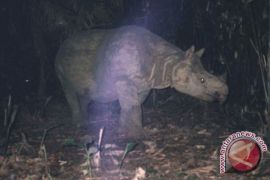"We have so far not conducted a head count but based on sightings made through video traps we believe their number is quite large," Hendra Purnam, a TNUK officer in charge of valuations and data collecting, said here Friday.
The bull population was believed to be flourishing because the animals had access to plenty of natural food and were being carefully protected.
The wild bull was living in a 30,000-hectare forest area in the park together with other rare species such as the one-horn Javanese rhinoceros, tiger, eagle and owa (a primate).
The wild bull was to be found only in Indonesia and Burma. In Indonesia, their habitats were located in Kalimantan and Java.
The TNUJK management was tightly protecting the rare animals, especially from illegal hunting activity, he said. The only enemies of the wild bull were tigers and forest dogs.
Hendra also said the park management had also observed the one-horn rhinoceros population through video traps and now estimated there were 35 of them in the park. (*)
Editor: Aditia Maruli Radja
Copyright © ANTARA 2012











